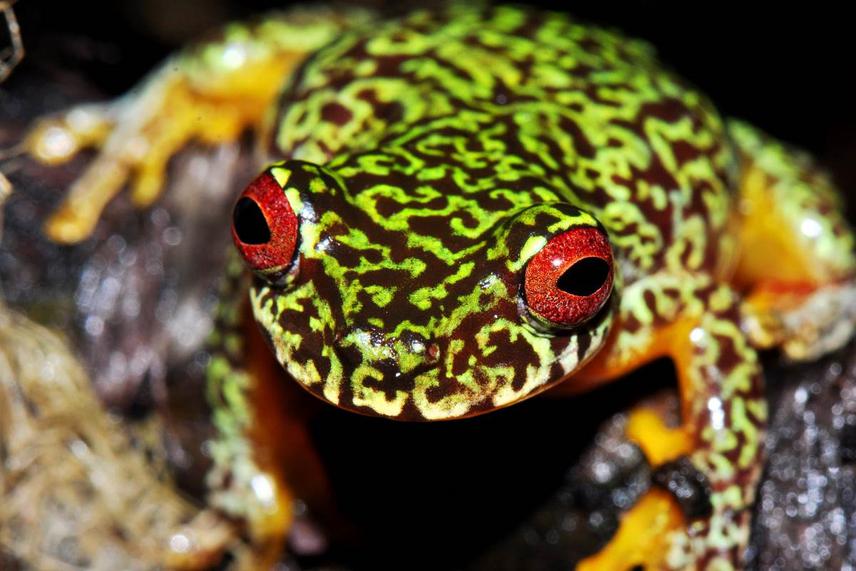Jonathan Kolby
Other projects
29 Sep 2008
Investigation of Forest Canopies as Possible Safe Havens from Amphibian Chytrid Fungus (Batrachochytrium dendrobatidis): Hope in the Midst of a Global Amphibian Extinction Crisis
16 Jul 2010
Forest Canopies as Safe Havens from Amphibian Chytrid fungus, Phase II: Enigmatic Dispersal Mechanisms and Environmental Distribution
Through the establishment of the country's first amphibian ex situ management and reintroduction programme, we aim to prevent the extinction of three critically endangered amphibian species inhabiting the cloud forests of Cusuco National Park, Honduras. Wild population supplementation will be performed in conjunction with the development of captive assurance colonies in order to combat population declines caused by amphibian chytrid fungus.

Adult mossy red-eye tree frog (Duellmanohyla soralia). © Jonathan E. Kolby
Amphibian species worldwide are becoming increasingly threatened by the spread of emerging infectious diseases, most notably the amphibian chytrid fungus (Batrachochytrium dendrobatidis, hereafter "Bd"). Bd is highly virulent, causing dramatic declines in hundreds of species, and now recognized as a driving force in the amphibian extinction crisis. The loss of biodiversity attributed to Bd is especially apparent in Central America, where a growing number of species require ex situ management to ensure long-term survival. No such operations exist in Honduras, where an amazing diversity of critically endangered (32 spp.) and endangered (24 spp.) amphibian species are found.
In response to the growing need for applied conservation efforts in the country, this project will establish the Honduras Amphibian Rescue and Conservation Center (HARCC). Activities at this facility are designed to ensure the long-term survival of critically endangered amphibians found in Cusuco National Park (CNP), and fragment of montane rainforest that provides habitat for 16 endangered and critically endangered amphibian species. Three critically endangered species have been selected for conservation management including: Duellmanohyla soralia, Plectrohyla dasypus, and Plectrohyla exquisita. CNP is recognized by the Alliance for Zero Extinction as the only site of existence for the Honduran endemic P. dasypus and P. exquisita, and also represents the largest stronghold for D. soralia. The situation is especially grave for P. dasypus, which is reported by the IUCN to have already experienced, "... a drastic population decline, estimated to be more than 80% over the last ten years, inferred from the apparent disappearance of most of the population..."
The HARCC will address this conservation challenge and work to rebuild declining amphibian populations through a combination of ex situ and in situ management while placing strong emphasis on local capacity-building and skill development. HARCC captive management activities will occur within Honduras at Lancetilla Botanical Garden and Research Institute, in Tela, where bio-secure isolated amphibian rooms will be constructed to allow amphibians to be raised in a disease-free environment. This facility will provide the secure venue for two main rescue activities: 1) head-starting and reintroduction to increase the number of wild animals that may survive to adulthood, and 2) establishment and maintenance of long-term captive assurance populations to buffer against sudden population decline and extinction in the wild. Throughout the duration, mark-recapture surveys will be performed in CNP to allow continuous evaluation of the success of reintroduction efforts.